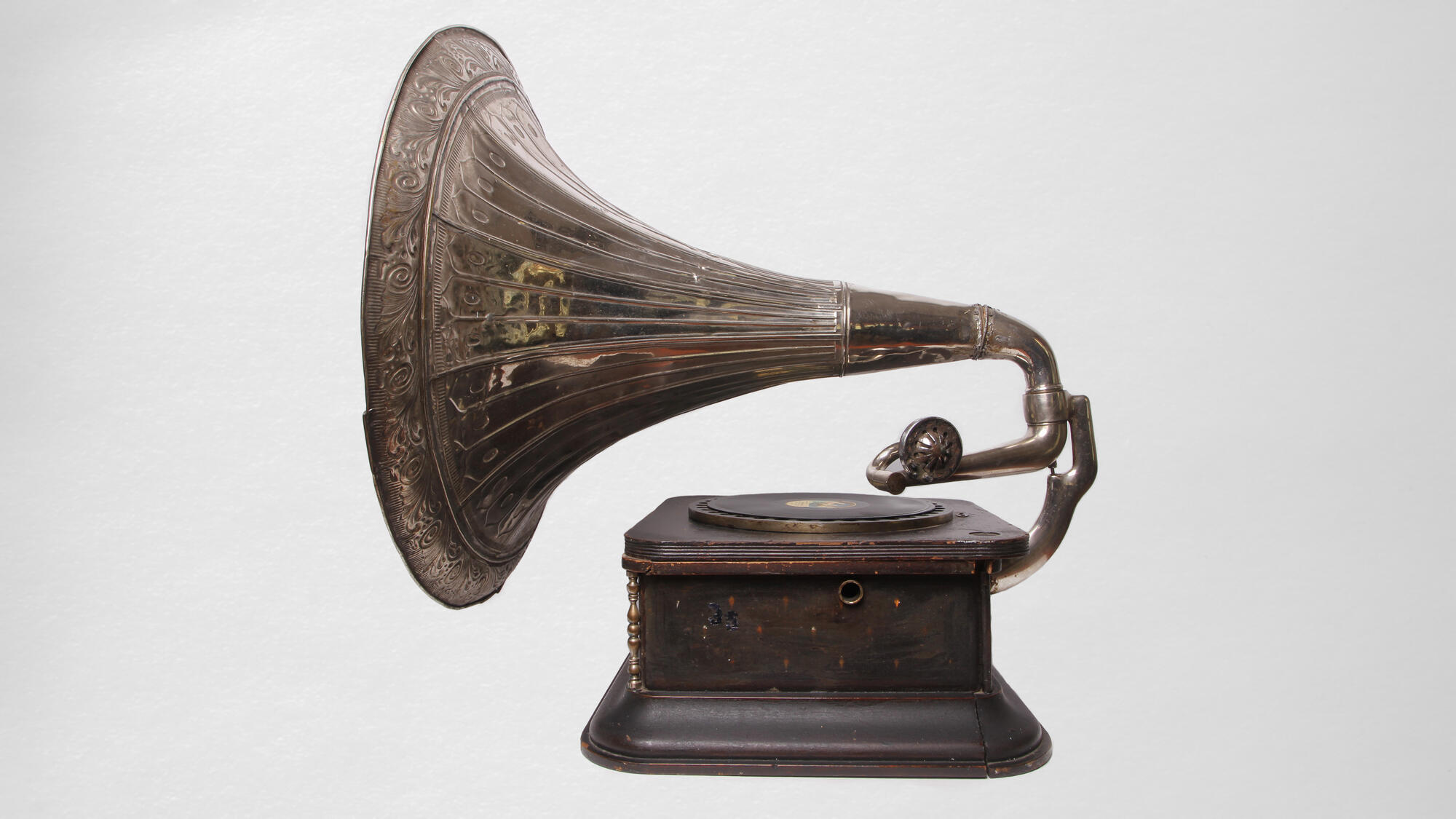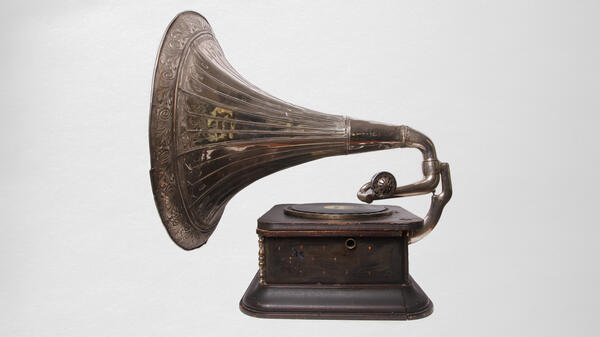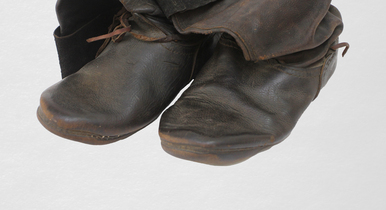The museum’s collection includes an antique table gramophone. Presumably, it was made in the UK at the end of the 19th century. The device consists of a wooden case decorated with metal inserts, a horn amplifier with decorative embossing, and a brass pipe 40 centimeters long. The mechanical winding mechanism can be visible when the lid is opened.
Such a gramophone sounded scratchy and often distorted and interrupted the recording since its design could not keep a steady tempo for a long time. There were different needles in ancient gramophones: diamond, bamboo, thickened at the end, with a tight bend, and even with a spring around it. There is an ordinary steel needle in the museum exhibit.
The gramophone is equipped with a sizeable external horn, performing the function of a sound amplifier. At first, the inventors considered this detail a device decoration, but soon it was recognized as a disadvantage: the horn turned the gramophone into a bulky structure, difficult for transportation. Therefore, most times it was used in salons in one fixed place.
Most gramophone horns were made of brass. This lightweight and pliable material enabled decorators to create delicately and ornately shaped or carved trumpets and even decorate them with rich incrustation. The horn amplifier of the museum collection is made of brass and decorated with simple embossing.
In this particular gramophone, nearly all the original components have been preserved, but some parts were lost. For example, the exhibit is missing a tonearm; that is a lever with an attached pick-up cartridge. This peculiar kind of balancer ensured the needle even movement from the canned music disk edge to the center. The gramophone handle was also lost. It was a common problem for such devices. More often than not, the handle was lost or broken immediately after purchase, and thereafter it was tried to be replaced with something look-alike.
The cost of the gramophones was rather high. In Mariinsk, they became available due to local merchants. In the summer, the well-to-do residents of the city tried to place their gramophones closer to the window so that they could not only listen to but see the device. Quite often they arranged special evenings, where guests spent time listening to records.
Such a gramophone sounded scratchy and often distorted and interrupted the recording since its design could not keep a steady tempo for a long time. There were different needles in ancient gramophones: diamond, bamboo, thickened at the end, with a tight bend, and even with a spring around it. There is an ordinary steel needle in the museum exhibit.
The gramophone is equipped with a sizeable external horn, performing the function of a sound amplifier. At first, the inventors considered this detail a device decoration, but soon it was recognized as a disadvantage: the horn turned the gramophone into a bulky structure, difficult for transportation. Therefore, most times it was used in salons in one fixed place.
Most gramophone horns were made of brass. This lightweight and pliable material enabled decorators to create delicately and ornately shaped or carved trumpets and even decorate them with rich incrustation. The horn amplifier of the museum collection is made of brass and decorated with simple embossing.
In this particular gramophone, nearly all the original components have been preserved, but some parts were lost. For example, the exhibit is missing a tonearm; that is a lever with an attached pick-up cartridge. This peculiar kind of balancer ensured the needle even movement from the canned music disk edge to the center. The gramophone handle was also lost. It was a common problem for such devices. More often than not, the handle was lost or broken immediately after purchase, and thereafter it was tried to be replaced with something look-alike.
The cost of the gramophones was rather high. In Mariinsk, they became available due to local merchants. In the summer, the well-to-do residents of the city tried to place their gramophones closer to the window so that they could not only listen to but see the device. Quite often they arranged special evenings, where guests spent time listening to records.



